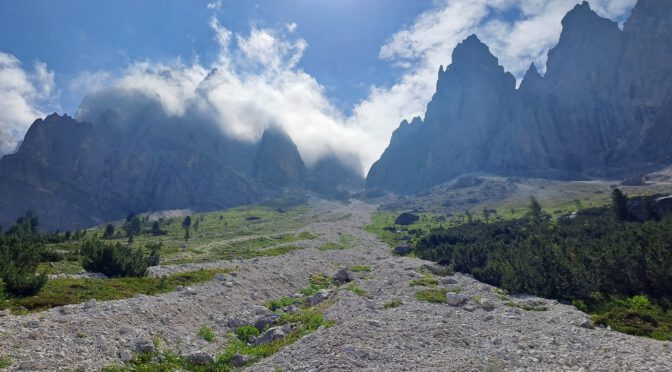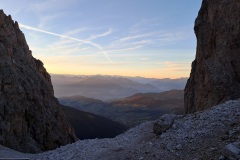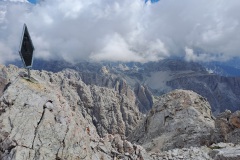Description
Hiking tours from Zans (Rifugio Zannes, 1680 meters AMSL; parking lot and bus stop) to Sass Rigais (3025 meters AMSL) via Mittagsscharte (2597 meters AMSL), descent on the same route.
Sass Rigais is a mountain located in the so-called Geislergruppe in the Dolomites in South Tyrol, Italy.
Photos and Video
November 2024
July 2023
Map, Topography
Notes and recommendations
This tour is moderately difficult in sections (B/C via ferrata), so climbing experience is mandatory.
Though you can do without it (and I’d seen quite a few people going without it), I recommend wearing a helmet and a via ferrata set/harness from the Mittagsscharte on.
A big red dot painted on the rock marks a via ferrata section; the more demanding via ferrata sections are at the beginning, near the peak it gets a little easier.












